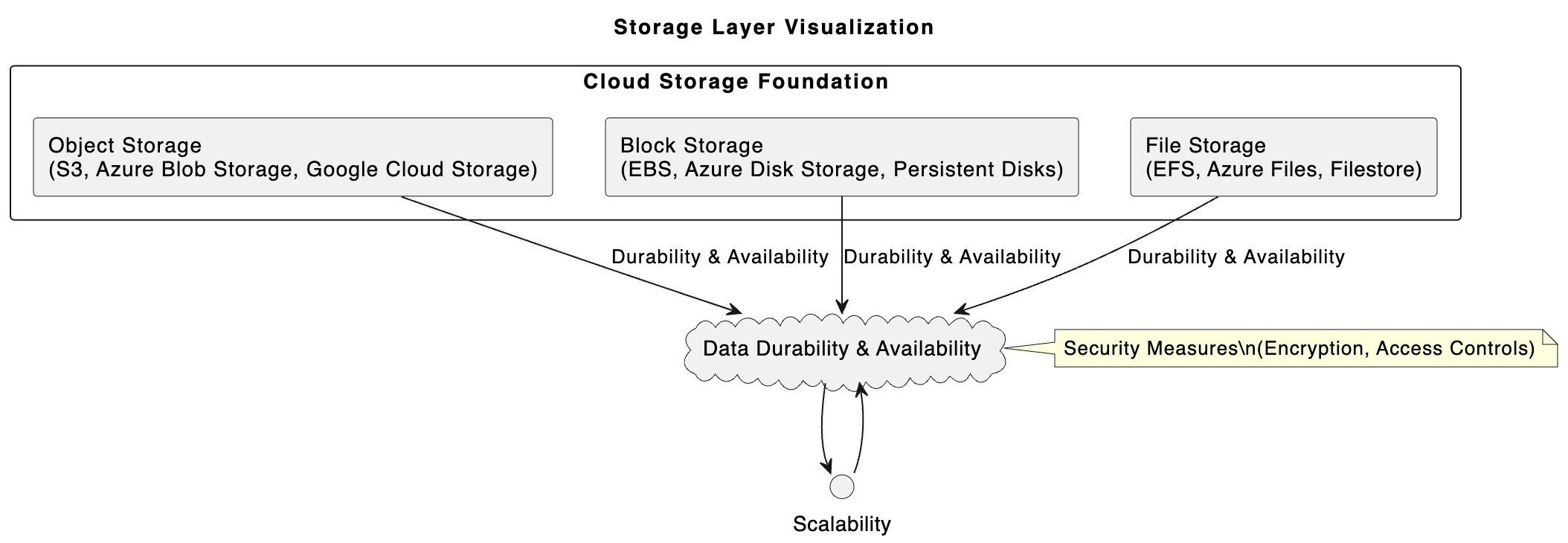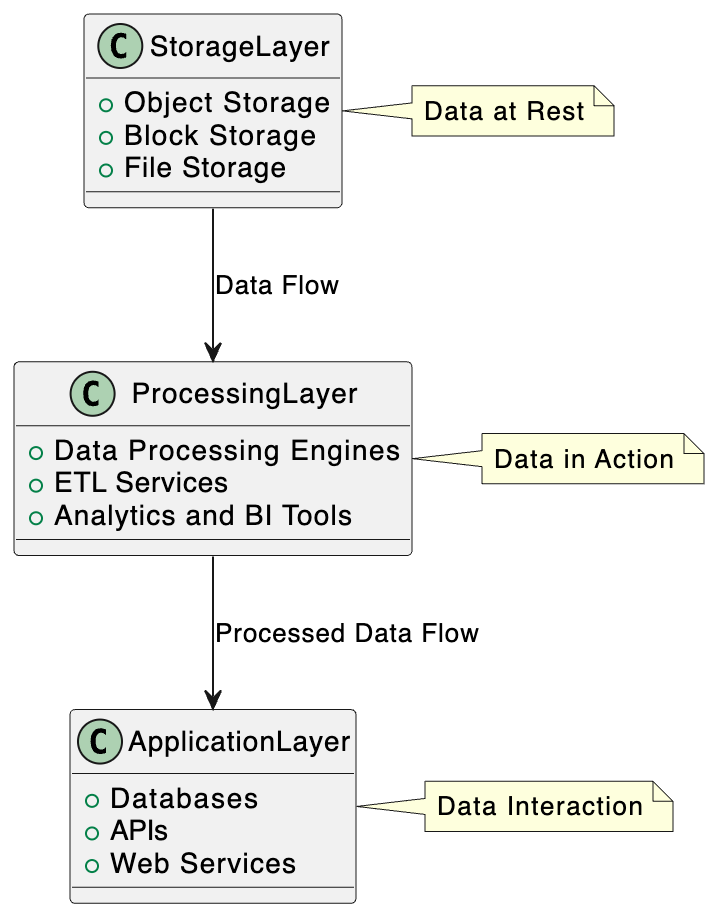Foundations of Data in the Cloud
Exploring cloud data management, and its layered structure from secure storage to processing and application, presentation, all underpinned by robust security measures.
Join the DZone community and get the full member experience.
Join For FreeIn the digital era, data is the new gold, and the cloud is the new frontier. As we embark on this journey through the cloud landscape, it's crucial to understand the bedrock upon which our data-driven aspirations are built. Just as a house needs a solid foundation before you can think about interior design, understanding the structure of data management in the cloud is essential before you can leverage it to its full potential. In this article, we'll dissect the layers of data management.
Exploring the Layers of Data Management
Imagine you're constructing a skyscraper. You wouldn't start with the penthouse, would you? Similarly, when we talk about managing data in the cloud, we must begin at the bottom and work our way up. Let's explore the layers that form the backbone of any cloud-based data strategy.
The Storage Layer
At the base of our data skyscraper lies the Storage Layer. This is the digital equivalent of a building's foundation. It's where all your data resides, waiting to be called into action. However, not all storage is created equal. Just as you'd choose a solid foundation for a house to withstand the elements, you need secure, robust, and scalable storage for your data.
Cloud storage solutions come in various flavors, such as object storage for unstructured data (think Amazon S3), block storage for structured data that requires frequent access (like Amazon EBS), and file storage for data that needs to be accessed via a file system (like Amazon EFS).

The Processing Layer
Data, while it sits idle, is like an uncut diamond; valuable but not yet dazzling. The Processing Layer is where the magic happens. It's the machinery that polishes the diamond, turning raw data into actionable insights. This layer encompasses all the computations, transactions, and transformations that your data undergoes.
Whether it's a simple query or a complex machine learning algorithm, the Processing Layer is where your data is put to work. Cloud computing services like Talend Cloud, Informatica Cloud for ETL processing, AWS Lambda for serverless computing, or Airflow jobs for massive data analysis are prime examples of the power that lies within this layer.
The Application Layer
Climbing up, we reach the Application Layer. This is where tools and services come into play, allowing you to interact with your data. It's the floor with all the amenities, the databases, the analytics software, and the content management systems.
In the cloud, services like Amazon RDS for relational databases or Google Analytics for web analytics are part of this layer. They provide the interfaces and tools necessary for businesses to manage, query, and manipulate their data effectively.

The Presentation Layer
At the top of our data skyscraper is the Presentation Layer. This is the grand lobby, the place where data is showcased in all its glory. It's all about how data is presented to the user, through dashboards, reports, visualizations, or other interfaces.
The Presentation Layer is where data becomes accessible and understandable to decision-makers. Tools like Tableau for data visualization or Power BI for business intelligence reports are part of this layer, turning complex data sets into clear, actionable insights.
Example: Retail Dashboard for Strategic Insights
'Trendsetter Boutique' has crafted a dynamic dashboard within the Presentation Layer that epitomizes the synergy between storage, processing, and application in cloud-based data management.
Initially, customer data and sales information reside in the Storage Layer, securely housing the raw figures and facts. In our example, they are available in Files and AWS Elastic Block Storage.
When processed in the Processing Layer through tools like ETL pipelines and analytics engines, this data is transformed into valuable data using AWS lambdas or Airflow jobs.
From there, the insights ascend to the Application Layer where they're handled by Cloud Databases like AWS Redshift Snowflake or AWS RDS, providing structure and accessibility to the harvested information.
The final visual representation occurs in the Presentation Layer. Here, Trendsetter’s dashboard (Tableau or Looker) comes into full swing, showcasing real-time sales trends and customer data through intuitive charts and graphs. This enables managers to not only monitor current performance but also to anticipate market shifts, making the dashboard an indispensable tool for the boutique's data-driven decision-making process.
Below is a visual representation of the layers for the 'Trendsetter Boutique.'

Securing Data in the Cloud
With the structure of data management in the cloud laid out, it's time to talk about security. After all, what good is a skyscraper if it's not safe? Data security in the cloud is a multifaceted challenge that involves protecting data at rest, in transit, and during processing.
Encryption is the steel-reinforced door of our data house. It ensures that even if someone gets past the perimeter defenses, they can't make sense of the data without the right key. Cloud providers offer various encryption options, from server-side encryption for data at rest to SSL/TLS for data in transit. In this article, we spoke about encryption options for your data at rest.
But security doesn't stop at encryption. It also involves identity and access management (IAM), ensuring that only authorized personnel can access certain data or applications. Think of IAM as the security guard at the entrance, checking IDs before letting anyone in.
Moreover, regular security audits and compliance checks are like routine maintenance checks for a building. As we continue to build and innovate in the cloud, these practices must evolve to counter new threats and meet changing regulations.
Conclusion: Always Build a Secure Data Fortress in the Cloud
In this article, we've laid out the blueprint of cloud data management, from the foundational Storage Layer to the pinnacle of the Presentation Layer. Like constructing a skyscraper, each layer plays a critical role in ensuring the integrity and utility of your data. However, the architecture is only as good as its security measures, so it is important to ensure high levels of security across all layers.
Opinions expressed by DZone contributors are their own.

Comments